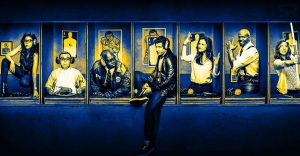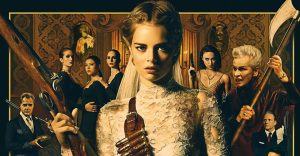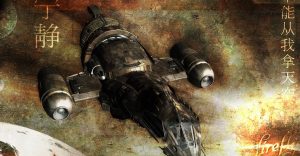The Warriors: 10 Major Differences Between The Book & Movie

The 1979 film, The Warriors, is an edge-of-your-seat thriller with a legion of dedicated fans. Despite the movie being lambasted upon its release, it has since become a beloved cult classic. In a strange story within a story, The Warriors is based on the 1965 book of the same name by Sol Yurick, and the book is actually based on an ancient Greek story called Anabasis.
All iterations of The Warriors (including Anabasis) feature the same key story of a group of men trapped behind enemy lines in a fight to travel to their sanctuary and home. Yet, there are also key differences between the 1965 book and the 1979 film version, culminating in two different but equally exceptional pieces.
The Meaning Of The Warriors

In the book, the term “warriors” refers to all gang members, meaning that even those who are in different gangs are still referred to as warriors in the book.
This contrasts with the movie, where “The Warriors” are one specific gang who occupies a singular turf in the city: Coney Island. No one else is referred to as a warrior in the movie except for the Coney Island Warrior gang members. The gang that constitutes the main characters in the film are actually the Coney Island Dominators in the book version.
The Gang Uniforms

The outfits of the titular gang are iconic among the film’s fans. Their uniforms consist of The Warriors insignia-labeled brown leather vest with no shirt underneath, along with long jeans/pants and a belt.
Meanwhile, in The Warriors novel, the Coney Island Dominators wear blue paisley polo shirts, monkey jackets, tight black chino pants, ankle boots, and a high crown straw hat that has a Mercedes-Benz hood emblem. It’s safe to say that the book version of the gang takes their fashion a bit more seriously than their film counterparts.
The Central Characters’ Demographics

In the novel, all of the main protagonists, namely The Dominators gang, were Black or Hispanic. There were white characters in the book, but The Dominators gang members were strictly Black and Hispanic/Latino.
In opposition, the majority of The Warriors gang members in the movie are white, with the exception of a couple of members. Shockingly, this change in the central characters’ demographics was due to the film’s studio, Paramount, not thinking an all Black and Hispanic/Latino cast would be commercial enough, according to the director Walter Hill in a retrospective on The Warriors for Fader. This was an unfortunate change and one of the many reasons why a Warriors movie remake could feature a new and diverse dream cast.
Why The Gang Meeting’s Leader Is Killed

In the film, the leader of the most powerful gang in New York City calls for a peaceful meeting of all the gangs in the district in a bid for them to band together and take over the city against “the man” or society. This is pretty much the same as the book, other than the fact that the name of the head gang leader who calls the meeting is named Cyrus in the movie and Ismael in the book.
In the film, Cyrus is applauded for his idea, except for the dissenting Luther, who belongs to The Rogues gang and fatally shoots Cyrus. In contrast, the book version features Ismael relating his idea to the crowd when cops suddenly raid the meeting after being tipped off. The cops’ arrival makes the gangs think Ismael set them all up. As a result, multiple gangs fire their weapons at Ismael, killing him.
There’s No Antagonist In The Book

In the movie, Luther is the catalyst for the events of the film following Cyrus’s murder. When he kills Cyrus, he notes that Fox suspects him as the killer. Luther then implicates The Warriors as the killers, which causes Cyrus’s gang members to decry a hit on them to be enacted by all the gangs of the city.
Luther is to blame for The Warriors’ treacherous journey home, as all the gangs in the city try to hunt them down. Subsequently, he is the main villain of the film. In the book, no specific gang is to blame for Ismael’s murder, so there is no hit put on anyone. The danger for the gang in The Warriors book is due to The Dominators gang having to cross through enemy territory to reach their home turf while also evading cops, making there no real antagonist in the novel.
A Central Idea Of The Book’s Story Is Left Out Of The Film

Many of the gang activities presented in the book are acts to show masculinity, power, and the upholding of reputation. There is even a literal “pissing contest” in the book between The Dominators gang members.
In the film, the role that masculinity and power play in the gang’s actions are completely left out. Rather, the focus is on self-defense from other gangs, the group reaching their home turf, and camaraderie. Gang activities are not done to show manhood or dominance in the movie, but it is strongly suggested in the book.
The Tone

The film could be thought of as a sort of urban Western. Heroes are presented against villains in a fight against false accusations. In line with the almost fantasy depiction of violence, fight scenes of The Warriors are balletic in nature with slow-motion effects put in along with karate kicks, making it an amazing action thriller movie without any CGI. The fight scenes are not done in a cinema verite aesthetic, but rather are highly stylized.
On the flip side, the book is a more realistic and thought-provoking depiction of gangs and urban living in the ’60s. The authenticity of the subculture shown in the book is also reflected through the book’s violent scenes. Instead of the balletic scenes of the film, the book has fewer fights but more rapes and murders.
The Portrayal Of Gang Life

Different attributes of gang life are portrayed in the book, whereas the movie doesn’t spend any of its runtime on gang activities or rituals other than letting the audience know that the subways are a designated sanctuary space for all the city’s gangs.
For example, in the book, something called a “war party” is described when the Dominators are passing through another gang’s territory. A “war party” is said in the book to mean changing the positions of their cigarettes in their hat brims.
The Ending

In the film, Cyrus’s gang members are alerted that Luther shot Cyrus and not the Warriors. Meanwhile, The Warriors’ “warlord.” Swan, and villain, Luther, go toe to toe in a fight on Coney Island, where an unarmed Swan is able to knock the gun out of Luther’s hand just in time for Cyrus’ gang members to show up. There, the gang members of the fallen Cyrus descend on Luther, getting their revenge. As The Warriors showed great courage and skill, their reputation and hierarchy within the gang ecosystem rose.
But the book has a much more downtrodden ending, with Dominator member, Hinton, going back to Coney Island. He goes home and sees his mom entertaining another man while his baby sister is crying, unattended and neglected. This prompts Hinton to help his baby sister while talking to his drug-addicted half-brother and then traveling to the outside fire escape, where he falls asleep sucking his thumb. The movie’s ending shows a promising future for The Warriors, while nothing changes for the Dominators in the book and their future looks just as bleak as before.
The Main Theme

The Warriors novel is more socio-economic in scope than the film. The Warriors film makes mentions of differing socio-economic statuses in the city, but the main idea of the film is that of brotherhood and camaraderie.
The book looks at the social and economic factors that lead to the idea that a gang can act as a surrogate family to those who deal with dysfunction and alienation in their daily lives. Likewise, the book gives attention to the idea of what constitutes a false sense of manhood among youths who have no real positive male role models.
About The Author

















